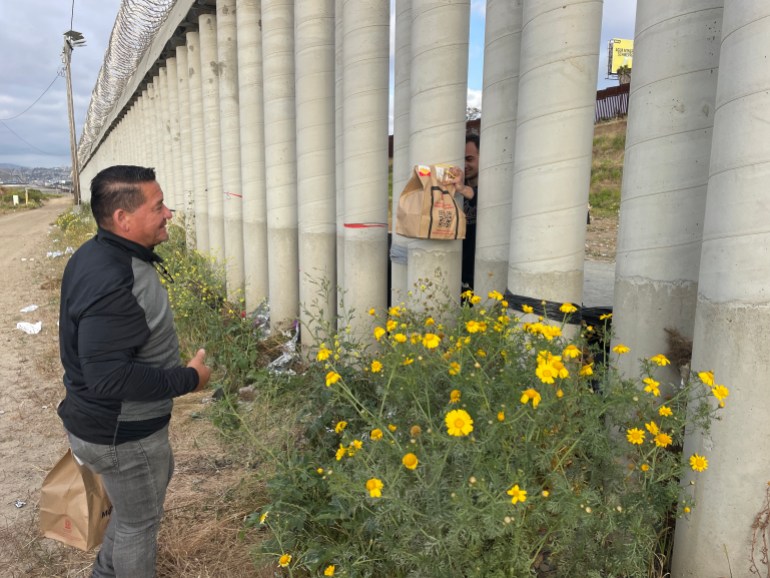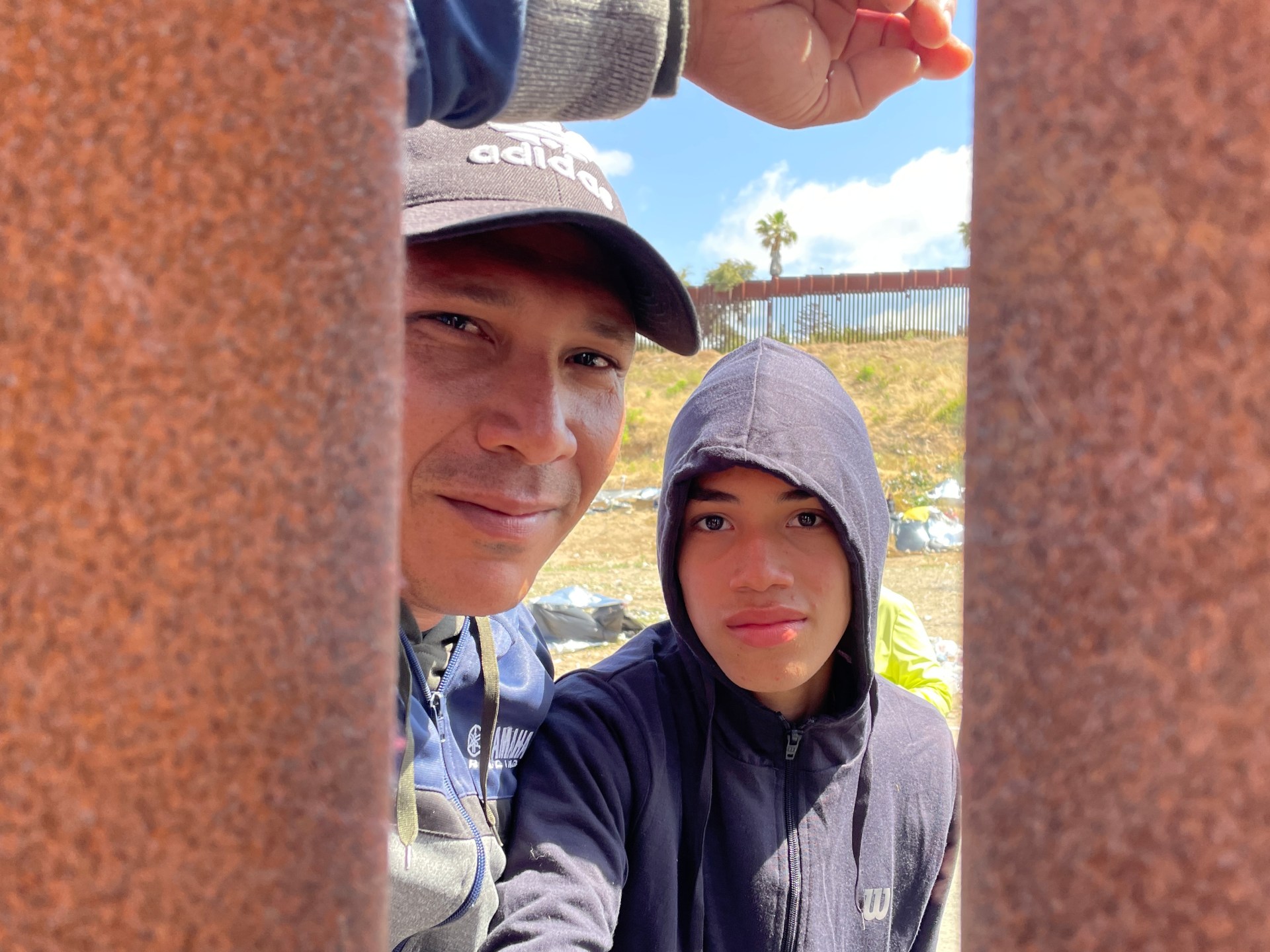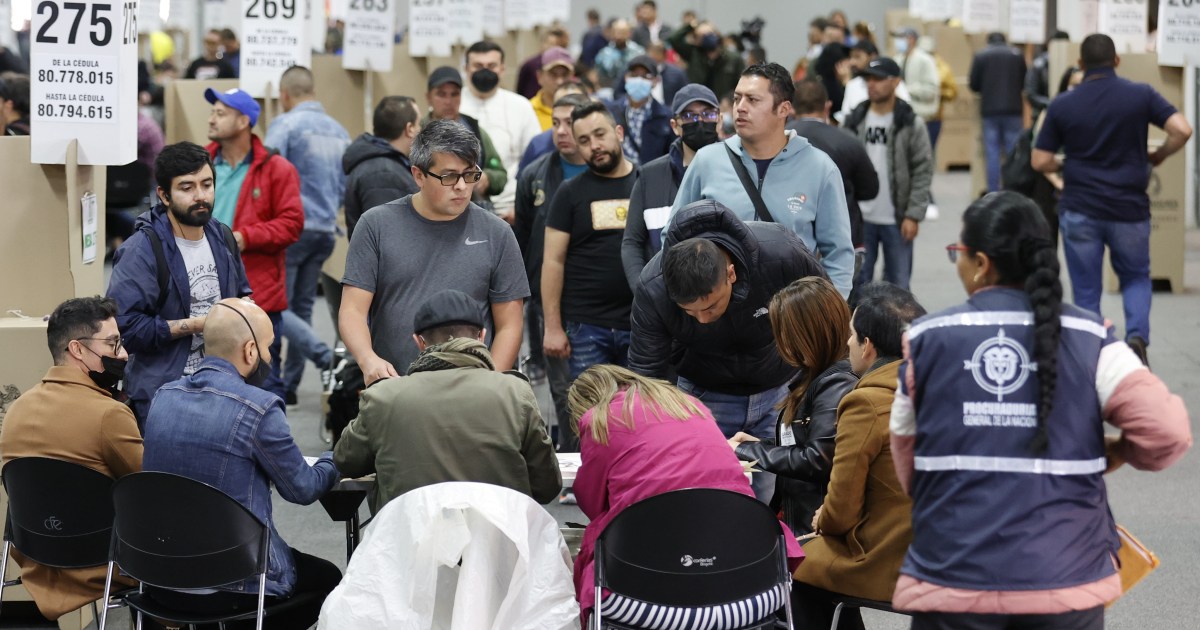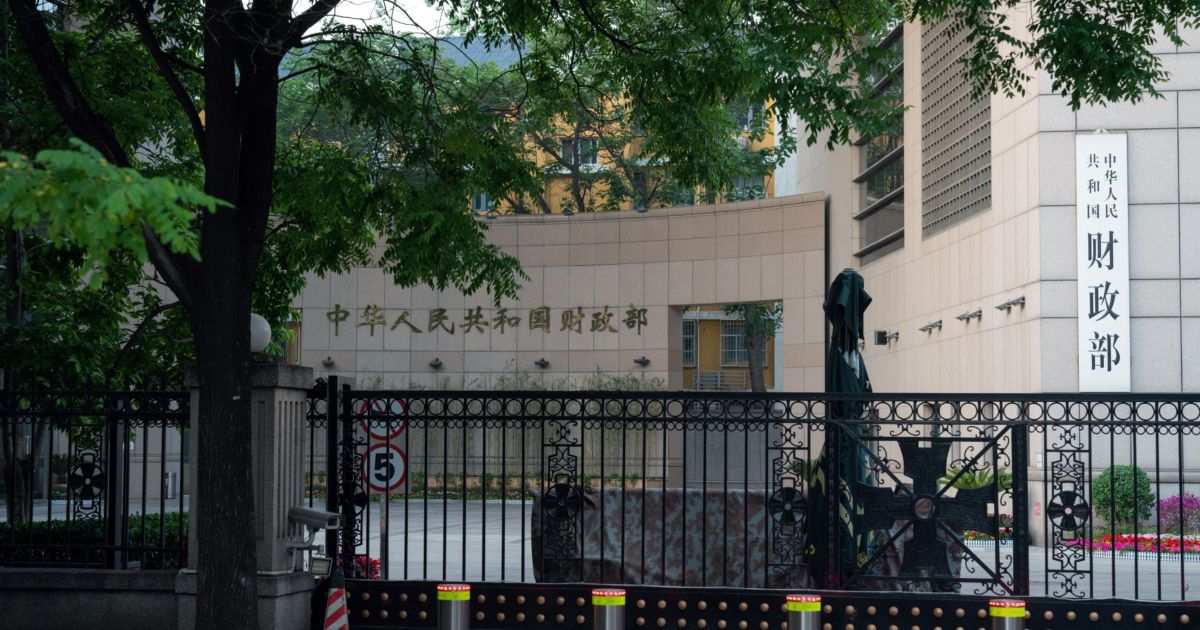As Title 42 ends in US, asylum seekers wait for relief on border | Migration News
Tijuana, Baja California, Mexico – “No, there is no difference today,” Jerson said as he peered through the gaps of the Mexican border wall on Friday morning.
For days, it had been the same: Hundreds of people from countries including Haiti, Colombia, Brazil, Turkey and Afghanistan have been stranded between two tall walls that slice across the land.
Across one wall is Tijuana, Mexico. And across the other is the district of San Ysidro, part of the United States city of San Diego.
On May 9, Jerson, a 36-year-old from Colombia, and his 16-year-old son Bryan climbed over the Mexican side, landing on a narrow ribbon of US soil. Since then, they have spent three cold nights sleeping on the ground under flimsy tarps. And now they wait, hoping for US Border Patrol to process their asylum claims.
That is the limbo many asylum seekers face at the US’s southern border, now that the controversial migrant expulsion policy Title 42 has expired — and uncertainty has taken its place.

Through slits in the wall, a small but lively economy has developed: Migrants and asylum seekers pass money to one side, and food delivery workers respond with servings of chicken and coffee.
Jerson, speaking in Spanish and withholding his last name for safety reasons, explained he had received water but no food from US Border Patrol that morning. As he spoke, a Border Patrol vehicle rolled slowly past, observing the scene.
But Jerson felt he could not leave the narrow alley between the two walls. Back home in Colombia, he said he received threats from gangs. After taking four different flights to arrive in Tijuana, he found himself frustrated by the CBP One app, a mobile platform US Customs and Border Protection created for asylum seekers to schedule immigration appointments.
“Error, error, error,” Jerson remembered reading on the app. “It didn’t accept my passport photo.”
So he and his son wait, pinned between the two walls, hoping for a chance to rejoin their family in New York, where Bryan’s mother and two older brothers live. But that will require navigating a new system of border policies, one that has been in place for less than 24 hours.
Carrot-and-stick approach
Invoked in 2020 under then-President Donald Trump, Title 42 allowed the US to expel asylum seekers without processing their claims, on the ground of public health.
But when the US ended its emergency declaration for the COVID-19 pandemic on Thursday, Title 42 ended with it.
At midnight US Eastern time (04:00 GMT), when the policy expired, the US implemented a carrot-and-stick approach at its southern border with Mexico. It opened up new legal pathways for migration but also enacted policies where irregular border crossings could result in a five-year ban on reentry and possible criminal prosecution.
It also announced new immigration processing centres in Colombia and Guatemala to screen people for asylum and immigration eligibility far away from the US border.

In addition, the new rules limit asylum claims from individuals who pass through other countries to reach the US. Similar to the “safe third country” rule under Trump, the policy requires asylum seekers to file for refugee status and be rejected in those other countries before they are eligible to apply in the US.
On Thursday, in advance of the rule coming into effect, the American Civil Liberties Union filed a lawsuit in a California federal court to block it, saying the administration of current President Joe Biden had “doubled down” on Trump’s “cruel” asylum restrictions.
The United Nations High Commissioner on Refugees had previously urged Biden to reconsider its regulations as key elements of the rule are incompatible with international refugee law.
“The Refugee Convention recognizes that refugees may find themselves compelled to enter a country of asylum irregularly,” the agency said. It added the regulation will lead to cases in which people are forced to return to dangerous situations — a practice prohibited under international law.
‘It’s going to become a deportation mill’
In Tijuana, people who want to claim asylum are having a difficult time accessing legal pathways, explained Erika Pinheiro, executive director of Al Otro Lado, an organisation that provides legal and humanitarian support for refugees in Tijuana and the US.
Many asylum seekers felt frustrated because they were unable to get an appointment through the CBP One app. Al Otro Lado has told migrants and asylum seekers there would be “at least some opportunity” for people to present themselves at ports of entry into the US. However, US Customs and Border Patrol will direct the majority of their resources to people with CBP One appointments.
Those who cross through a port of entry will have a “credible fear” interview — to assess claims of violence and persecution — within 72 hours of being in custody, Pinheiro explained.
If an asylum seeker cannot prove they have a legal basis for refugee status in the US, Pinheiro continued, they will be subjected to expedited removal procedures. She feared asylum seekers will have limited access to legal counsel during this process.
“It’s going to become a deportation mill because I don’t see how individuals can meaningfully engage in the legal process while staying in those conditions, especially if they’re expected to do so within 72 hours of crossing the border,” she said.
“Even if you are better able to access US soil, that doesn’t mean that you are going to be able to access protection,” Pinheiro said of the post-Title 42 system.

‘De-facto detention facility’
Standing on the San Ysidro side of the border on Wednesday, Pedro Rios and volunteers with the American Friends Service Committee handed bottled water and food to people through the wall.
“Border patrol will provide them with water three times a day and two granola bars, one in the morning and one in the evening,” he said. “And that’s all they get.”
He said the land between the walls “has become a de-facto detention facility”.
When migrants are held in detention, Customs and Border Protection have standards known as “Transport, Escort, Detention and Search” (TEDS) that govern how Border Patrol agents should treat people in short-term custody. They must provide meals and perform welfare checks.
However, a 2022 US Government Accountability Office report found there is no oversight mechanism to ensure the agency follows these standards.
After frequent visits to the wall in recent weeks, Rios believes CBP is not following the standards. The standards say they must process people expeditiously, but he spoke to a group of people from India who said they waited up to five days between the two walls to be processed.
Several young women from Brazil told Al Jazeera they had waited between the walls for four or five days.
Although he was sore and tired after sleeping on the ground, Jerson, the father from Colombia, remained patient. He, like many asylum seekers at the border, had faith that the system may yet work in their favour.
But the lines are long. And the barriers to entry are high. And for Jerson and his son, that means the future is up in the air.




